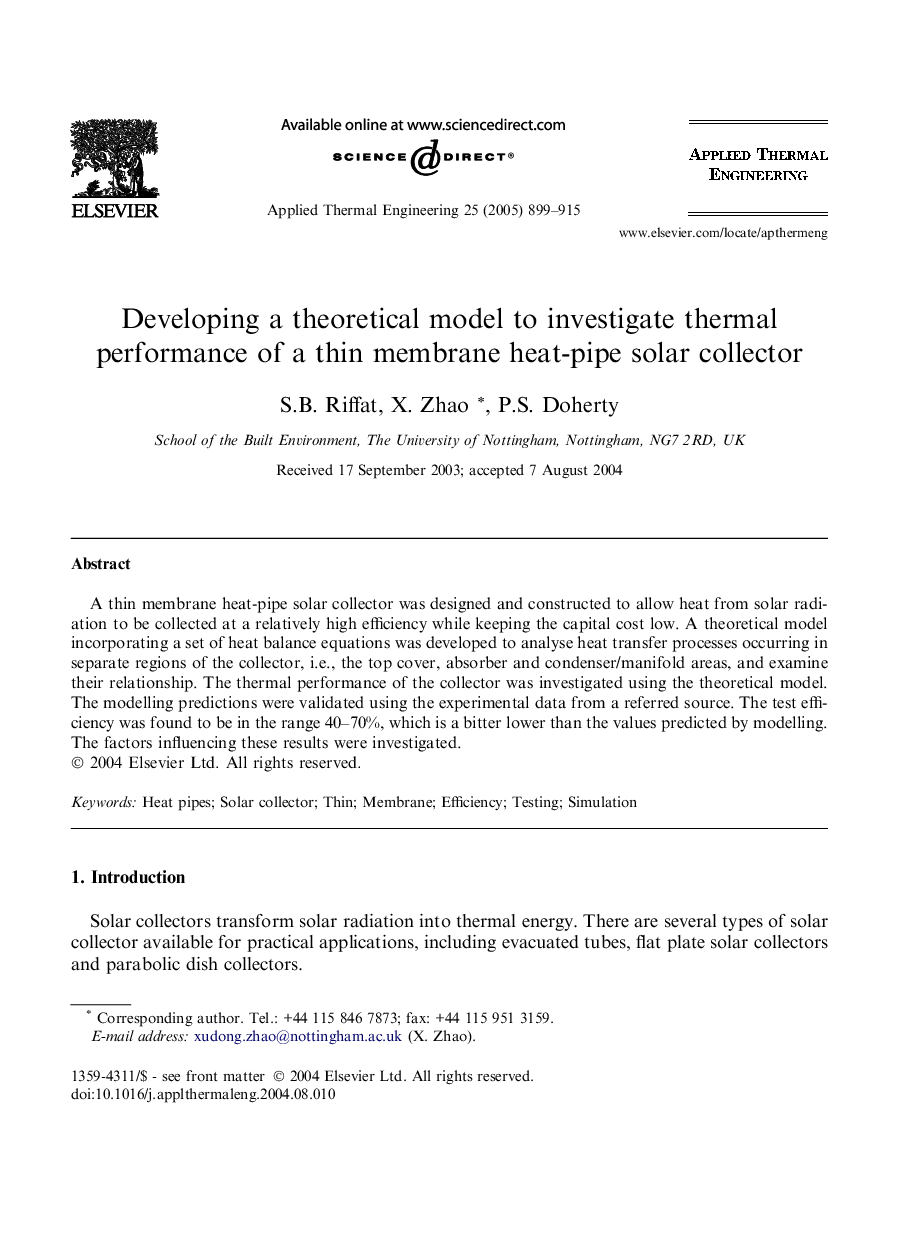| Article ID | Journal | Published Year | Pages | File Type |
|---|---|---|---|---|
| 9690352 | Applied Thermal Engineering | 2005 | 17 Pages |
Abstract
A thin membrane heat-pipe solar collector was designed and constructed to allow heat from solar radiation to be collected at a relatively high efficiency while keeping the capital cost low. A theoretical model incorporating a set of heat balance equations was developed to analyse heat transfer processes occurring in separate regions of the collector, i.e., the top cover, absorber and condenser/manifold areas, and examine their relationship. The thermal performance of the collector was investigated using the theoretical model. The modelling predictions were validated using the experimental data from a referred source. The test efficiency was found to be in the range 40-70%, which is a bitter lower than the values predicted by modelling. The factors influencing these results were investigated.
Related Topics
Physical Sciences and Engineering
Chemical Engineering
Fluid Flow and Transfer Processes
Authors
S.B. Riffat, X. Zhao, P.S. Doherty,
